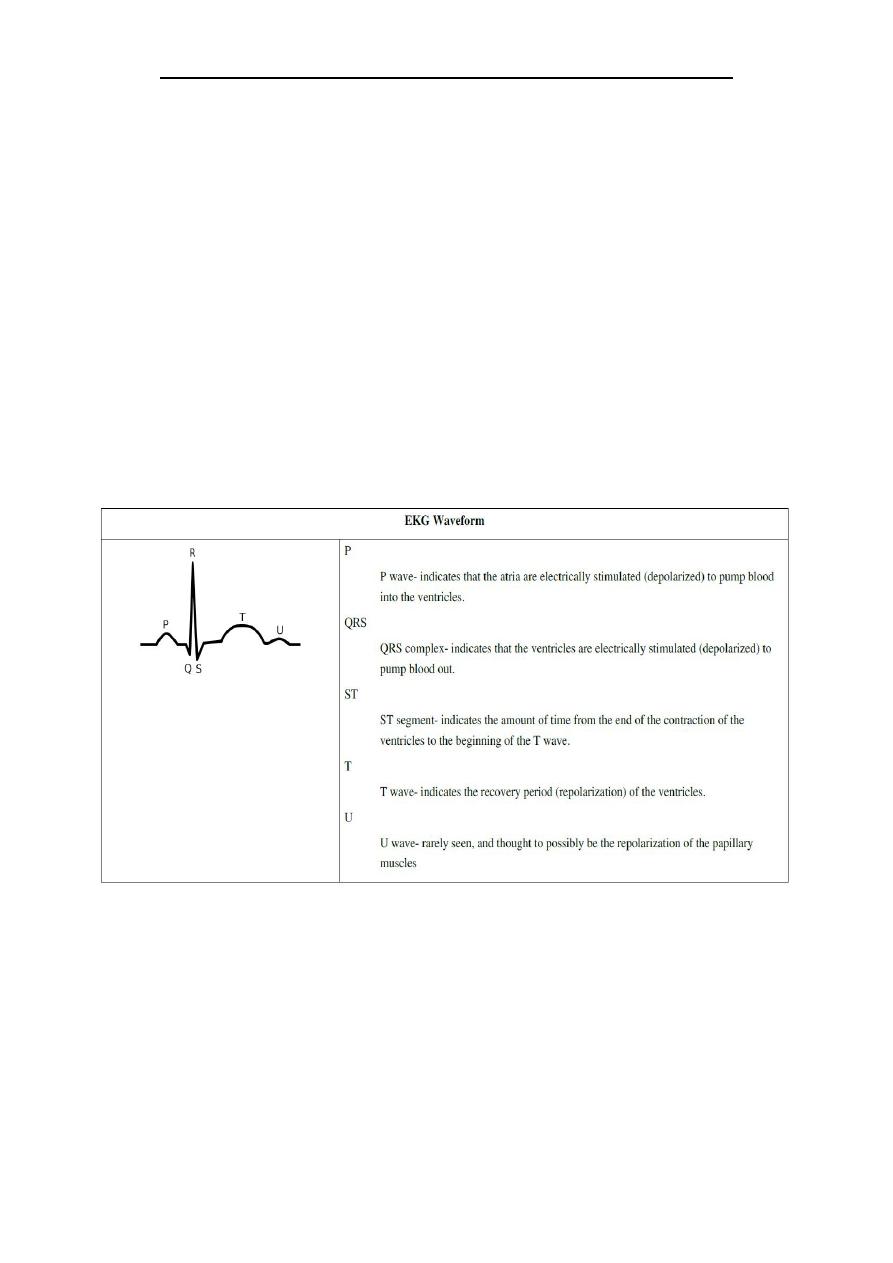
Lec. : 5 Physiology
1
The Electrocardiogram (ECG)
E.C.G stands for electrocardiogram and represents the electrophysiology of the
heart. Cardiac electrophysiology is the science of the mechanisms, functions, and
performance of the electrical activities of specific regions of the heart. The ECG is the
recording of the heart's electrical activity as a graph. The graph can show the heart's
rate and rhythm, it can detect enlargement of the heart, decreased blood flow, or the
presence of current or past heart attacks. ECG's are inexpensive, non-invasive, quick,
and painless. Depending on the results, the patient’s medical history, and a physical
exam; further tests or a combination of medications and lifestyle changes may be
ordered.
How to Read an ECG
Blood Pressure
Blood pressure is the pressure exerted by the blood on the walls of the blood
vessels. Unless indicated otherwise, blood pressure refers to systemic arterial blood
pressure, i.e., the pressure in the large arteries delivering blood to body parts other
than the lungs, such as the brachial artery (in the arm). The pressure of the blood in
other vessels is lower than the arterial pressure. Blood pressure values are universally
stated in millimeters of mercury (mmHg). The systolic pressure is defined as the peak

Lec. : 5 Physiology
2
pressure in the arteries during the cardiac cycle; the diastolic pressure is the lowest
pressure (at the resting phase of the cardiac cycle). The mean arterial pressure and
pulse pressure are other important quantities. Typical values for a resting, healthy
adult are approximately 120 mmHg systolic and 80 mmHg diastolic (written as 120/80
mmHg), with individual variations. These measures of blood pressure are not static,
but undergo natural variations from one heart beat to another, and throughout the day
(in a circadian rhythm); they also change in response to stress, nutritional factors,
drugs, or disease.
Systolic Pressure
Systolic Pressure is the highest when the blood is being pumped out of the left
ventricle into the aorta during ventricular systole. The average high during systole is
120 mmHg.
Diastolic Pressure
Diastolic blood pressure lowers steadily to an average low of 80 mmHg during
ventricular diastole.
